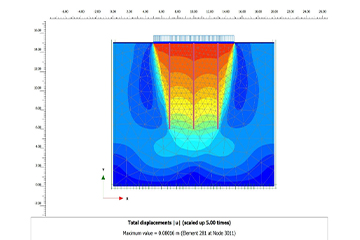


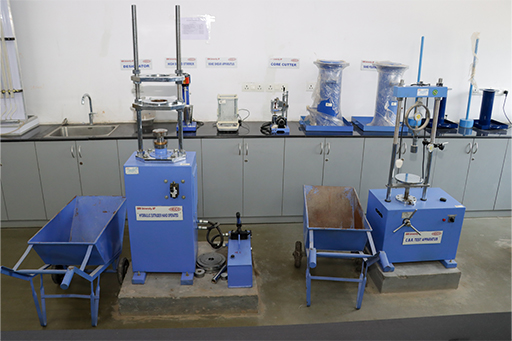
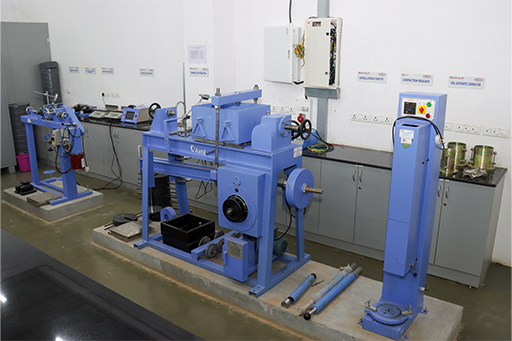
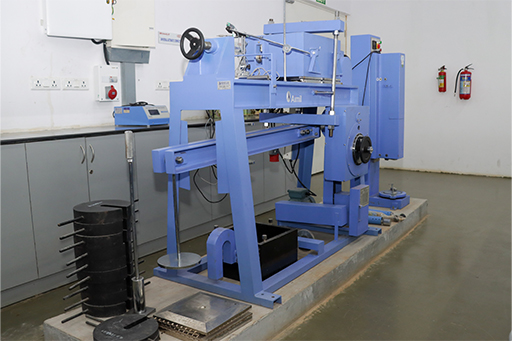

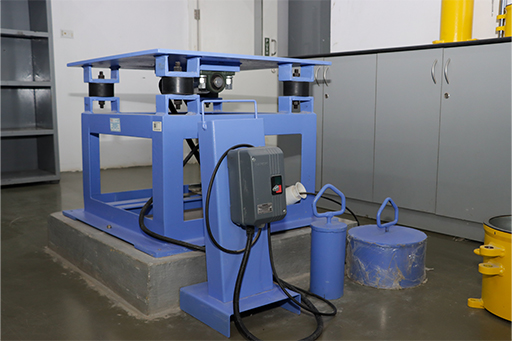
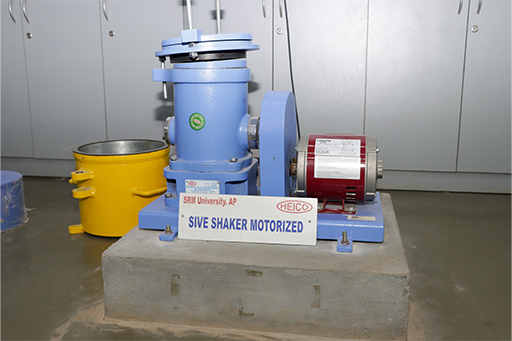
Specifications
Description:
Test is performed as per (IS: 2720 - part ꠲). Suitable for determination of specific gravity of sand and fine gravel.
Specifications
Description:
Test is performed as per (IS: 2720-part ꠰). Suitable for determination of specific gravity of fine clay particles.
Specifications
Description:
Determination of In-situ dry density of soil as per (IS:2720-Part XXIX) It is mainly used in fine grained cohesive soils without stones.
Specifications
Description:
The apparatus is suitable for field density estimation of fine and medium grained soils, as per (IS: 2720-Part XXVIII)
Specifications
Description:
Grained size analysis is a basic laboratory test required to identify soils in engineering soil classification system.
Specifications
Description:
Test is performed as per (IS: 2720-Part IV). Used for particle size analysis of soil in suspension when it has more than 10% of micron IS sieving passing material.
Specifications
Description:
The test is performed as per (IS: 2720-Part V) gives the moisture content at which a soil passes from the plastic the liquid state.
Specifications
Description:
This test is performed as per (IS:2720-Part V) the water content at which a soil-water paste changes from a semisolid to a plastic consistency as it is rolled into a 3.175 mm (1/8 inch) diameter thread in a standard test.
Specifications
Description:
Used to maintain the required temperature to samples
Specifications
Description:
This test is performed as per (IS: 2720-Part VI) the maximum water content at which a reduction in water content does not cause an appreciable reduction in volume of the soil mass.
Specifications
Description:
The Automatic soil compactor replace the hand compaction procedure as specified for dry density moisture content relationship of soil. As per (IS: 2720-Part VII &VIII).
Specifications
Description:
Suitable for both constant head as well as falling head permeability test. The apparatus consists of Universal Permeameter (IS: 2720-Part XVII), IS 11209.
- Capacity: 200kg/2000N
- Resolution: 0.1kg/1N
- Stroke: + or -20mm
- Resolution: 0.01mm
Description:
To determine the shear strength parameters of cohesionless soil. As per (IS: 2720-Part XIII).
Specifications
Description:
The Unconfined Compressive Strength test is performed as per (IS 2720-Part X) at controlled rate of strain. Gives the compressive and shearing strength of clayey soil, both in undisturbed and remoulded condition.
Specifications
Description:
The vane shear test apparatus consists of a four – blade stainless steel vane attached to a steel rod that will be pushed into the ground. As per (IS: 2720-Part XXX).
Specifications
Description:
Primarily meant for determination of void ratio of cohesion less soil, free draining soils, in loosest and densest states as per (IS: 2720-Part XIV).
Specifications
Description:
CBR test is penetration test developed by California stated highway department for evaluating the bearing capacity of sub grade soil for design of flexible pavement. As per (IS: 2720 - Part XVI).
Specifications
Description:
A triaxial test is performed on a cylindrical core soil or rock sample to determine its shear strength. The triaxial test attempts to replicate the in-situ stresses on the core soil or rock sample.
As per (IS: 2720-Part XII).
Specifications
Description:
Determination of soil compressibility saturated soils. The test performed as per (IS: 2720-Part XV).
Specifications
Description:
Large Scale Direct Shear test the shear resistance between a geosynthetic or geosynthetic clay liner (GCL) and the contact surface of a layer soil sample according to test methods in ASTM D5321 and ASTM D6243. The test sample is divided horizontally and mounted in a two-piece shear box assembly. As per (IS: 2720-Part XIII).
Specifications
Description:
The soil moisture content expressed as the amount of water present in a depth of one meter of soil. As per (IS: 2720-Part II).
Specifications
Description:
The soil sample is oven dried and then heated to 400°C; at this temperature organic matter is burned off. By measuring the weight lost by the sample the amount of soil organic matter can be estimated. As per (IS: 2720-Part XXII).
1. Plaxis
Description:
DC (direct current) resistivity methods involve injecting a steady state electrical current into the ground and observing the resulting distribution of potentials (voltages) at the surface or within boreholes. As per IS: 15736 (2007).
